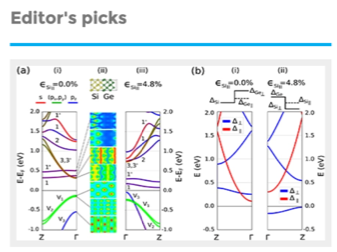Role of substrate strain to tune energy bands–Seebeck relationship in semiconductor heterostructures
Vitaly S. Proshchenko, Manoj Settipalli, Artem K. Pimachev, and Sanghamitra Neogi, J. Appl. Phys., 129(2), 025301 (2021)
First principles study of the modulated charge transport properties of multilayered seminconductor heterostructures with external substrate induced strain
